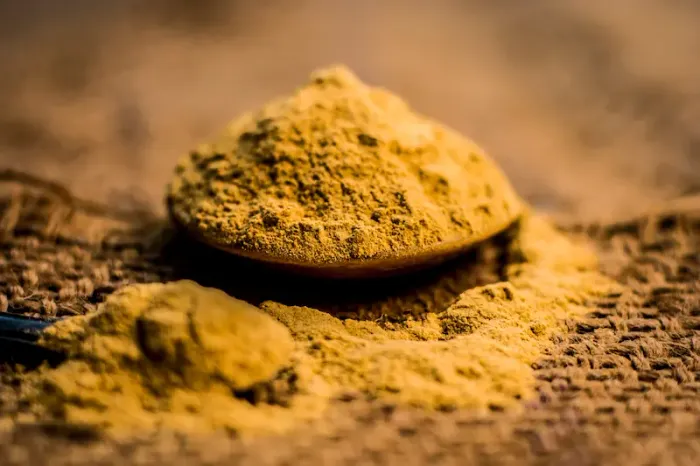Multani Mitti (Fuller’s Earth) Ayurvedic Benefits and Beauty Uses
Explore the benefits of multani mitti, easy face pack recipes, and skincare tips. Learn safe use, who should avoid, and dermatologist-backed best practices.


Introduction: Why Multani Mitti Still Matters in Modern Skincare
Multani mitti, also called Fuller’s Earth, is a classic beauty ingredient in Ayurveda and South Asian home care. For generations, people have used it as a face pack to absorb excess oil, refresh the skin, and feel “clean” after a long day. Today, many still reach for it because it’s simple, affordable, and easy to DIY. If you’re curious about multani mitti benefits, how to use it safely, and where it fits into an effective skincare routine, this guide is for you. Consult a Top Ayurveda Doctor for Personalised Advice
What is Multani Mitti (Fuller’s Earth)?
Multani mitti is a natural clay known for its absorbent properties. It helps remove excess oil, leaving the skin feeling refreshed and smooth.
• Multani mitti is a type of natural, absorbent clay. In industry, “Fuller’s Earth” is a broad term for clays that can pull in (adsorb) oils and impurities.
• In traditional beauty rituals, multani mitti is commonly mixed with water or rose water and used as a quick-setting mask that leaves skin feeling matte and refreshed.
• Its composition can vary by source. Because it’s very absorbent, it’s best suited to oily or combination skin rather than very dry or sensitive skin.
Important Note on Evidence
Modern studies on multani mitti are limited, but traditional use aligns with known clay mask benefits such as oil absorption and temporary skin refreshment.
While multani mitti has a long history in Ayurvedic beauty practices, modern clinical research on this specific clay for skin is limited. Most of the benefits people notice—like less shine and a cleaner feel—are consistent with what dermatologists say about clay masks in general: they can temporarily absorb oil and surface impurities but are not a medical treatment. Good skincare basics, daily sunscreen, and proven acne treatments (when needed) remain the foundation of healthy skin.
Evidence-Informed Multani Mitti Benefits for Skincare
Multani mitti offers practical cosmetic benefits for those with oily or combination skin, helping manage shine and surface impurities.
1) Helps Absorb Excess Oil (Sebum)
• What people notice: less shine, a tighter feel right after rinsing, and makeup that sits better afterwards.
• Why it happens: clays absorb oil and water on the skin’s surface, which can make pores look smaller temporarily.
• What it’s not: a cure for acne. If you have frequent breakouts, consider proven treatments (like benzoyl peroxide, salicylic acid, or retinoids) and see a dermatologist for guidance.
2) Gentle Physical Exfoliation When Rinsed
• The paste can help lift away surface debris as you massage it off. This may make skin feel smoother and look a bit brighter for a short time.
• Reminder: it doesn’t permanently change pore size, lighten skin tone, or remove deep blackheads. It’s a cosmetic, not a medical, effect.
3) A “Cooling” and Soothing Feel
• As water evaporates from the mask, you feel a cooling sensation. This can be pleasant after heat or humidity.
• Keep expectations realistic: the soothing feel does not mean it treats skin conditions. If you have irritation, rashes, or eczema, check with a clinician.
4) Oil Control for Scalp and Hair (Optional Use)
• A thin multani mitti paste can be used on the scalp to absorb oil before shampooing.
• Limit to the scalp (not the hair lengths) and avoid letting it fully dry hard, which can be very drying and difficult to rinse out.
Traditional Ayurvedic Context (With Modern Safety in Mind)
Ayurveda describes multani mitti as “cooling” and cleansing, but safe use today requires modern caution and patch testing.
• In Ayurveda, multani mitti is often described as having “cooling” and absorbent qualities and is used in ubtan (herbal cleansing pastes) and face packs.
• Common pairings include rose water, sandalwood powder, or a pinch of turmeric. If you try these, patch test first and keep formulas simple to reduce irritation risk.
• Avoid harsh add-ins like lemon juice or undiluted vinegar. These can sting and disrupt your skin barrier.
Who Might Benefit—and Who Should Avoid Multani Mitti
Multani mitti can suit oily or combination skin types, but may be too drying for sensitive or compromised skin.
May Benefit
• Oily or combination skin with visible surface oil or shine
• People who like a simple, occasional oil-absorbing mask before events or on hot days
• Those looking for a budget-friendly, quick mattifying step
Use with Caution or Avoid
• Dry, sensitive, or reactive skin types
• People with eczema, rosacea, or an impaired skin barrier
• Anyone with active skin infections, open wounds, or significant irritation
• Children and infants (their skin barrier is delicate; avoid)
• People with asthma or chronic lung conditions (avoid inhaling powder dust)
• During pregnancy and breastfeeding: topical use is generally considered low risk, but data on multani mitti specifically are limited. If in doubt, discuss with your clinician and use gentle, minimal formulas.
How to Choose and Store Multani Mitti Safely
Choosing pure, cosmetic-grade clay ensures safety and better results without unnecessary additives.
• Choose cosmetic-grade clay from reputable brands. Avoid industrial-grade Fuller’s Earth (not for skin).
• Look for products that share sourcing information or testing standards.
• Avoid added fragrance, dyes, or unknown “whitening” agents.
• Store in an airtight container in a cool, dry place. Keep moisture out of the jar to prevent clumping or contamination.
How to Use Multani Mitti: Simple Face Pack Recipes and Steps
Following correct preparation and timing helps maximise benefits while preventing dryness or irritation.
Before You Start: Patch Test
• Mix a small amount of the final mask on a clean inner forearm or behind the ear.
• Leave for 10 minutes, then rinse.
• Wait 24 hours. If you notice redness, burning, itching, or rash, don’t use on your face.
General Face Pack Steps (For Most Users)
1. Cleanse with a gentle, non-soap cleanser and pat dry.
2. Mix 1–2 teaspoons of multani mitti with enough room-temperature water or rose water to make a smooth, yoghurt-like paste.
3. Apply a thin, even layer to the face, avoiding the eyes, eyelids, lips, and any broken skin.
4. Leave on for 5–10 minutes. Do not let it crack hard or over-dry; that can irritate your skin.
5. Rinse thoroughly with lukewarm water, using gentle circular motions.
6. Pat dry and apply a fragrance-free moisturiser.
7. If it’s daytime, finish with a broad-spectrum sunscreen SPF 30 or higher.
Frequency
• Start 1 time per week. If your skin tolerates it well, some oily skin types may use it up to 2 times per week.
• If you develop tightness, flaking, or stinging, reduce frequency or stop.
Face Pack Ideas by Skin Type
Different skin types require slight adjustments for optimal results and comfort.
Oily/Acne-Prone Skin
• 1–2 tsp multani mitti + water or rose water
• Optional: add 1–2 drops of glycerin for a little hydration
• Keep it simple. Avoid adding lemon or strong acids.
Combination Skin
• 1–2 tsp multani mitti + equal parts water + 1 tsp aloe vera gel
• Apply only on the T-zone (forehead, nose, chin) if cheeks are dry.
Normal Skin
• 1–2 tsp multani mitti + water + 1/2 tsp plain honey (a humectant)
• Keep contact time short (5–7 minutes).
Dry or Sensitive Skin
• Consider skipping multani mitti entirely, or try a gentler clay like white kaolin.
• If you still want to try: dilute heavily, keep it on 3–5 minutes max, and moisturise well after.
Scalp Oil-Control Mask (Optional)
This can help reduce scalp oil but must be used carefully to prevent over-drying.
• Part hair to expose the scalp. Mix multani mitti with water to a thin paste.
• Apply to oily scalp areas only; avoid hair lengths.
• Leave 5–8 minutes and rinse thoroughly before shampooing.
• Use no more than once weekly. Stop if you notice dryness or flaking.
What Not to Mix with Your Multani Mitti Face Pack
Avoid acidic or strong active ingredients to protect your skin barrier.
• Lemon juice or undiluted apple cider vinegar (can burn and disrupt skin pH)
• Strong exfoliants the same day (glycolic acid, salicylic acid peels, scrubs)
• Retinoids or benzoyl peroxide right before or after the mask if you’re sensitive (space them out on different days or consult your dermatologist)
Safety, Side Effects, and How to Avoid Irritation
Following basic precautions keeps your skin comfortable and prevents damage.
Possible Side Effects
• Dryness, tightness, or flaking
• Redness or stinging
• Contact dermatitis (allergic or irritant reactions)
How to Reduce Risk
• Patch test first.
• Use a short contact time and avoid letting the mask crack hard.
• Moisturise after rinsing.
• Limit frequency to 1–2 times weekly.
• Avoid the eye area and broken or inflamed skin.
• Use cosmetic-grade clay and avoid inhaling the powder.
When to Stop and Seek Help
• If you develop a persistent rash, swelling, burning, or worsening acne, stop using the product and consult a healthcare professional or dermatologist.
Where Multani Mitti Fits in a Dermatologist-Backed Skincare Routine
A well-balanced skincare routine enhances results more effectively than masks alone.
Healthy skin comes from consistent, gentle habits. Leading medical organisations and dermatology experts emphasise:
• Gentle cleansing: Use a mild cleanser, especially if you have acne or sensitive skin. Over-washing can irritate and worsen oiliness for some people.
• Moisturising: Even oily skin benefits from a light, non-comedogenic moisturiser to support the skin barrier.
• Sun protection: Daily broad-spectrum sunscreen SPF 30 or higher is one of the most important steps to prevent sun damage and uneven tone.
• Evidence-based acne care (if needed): Ingredients like benzoyl peroxide, salicylic acid, adapalene (a retinoid), or prescription options have strong evidence for acne. Clay masks like multani mitti can be an optional, occasional add-on for oil control, not a replacement for treatment.
A Sample Weekly Routine for Oily/Combination Skin
Morning:
• Cleanser
• Lightweight, oil-free moisturiser
• Broad-spectrum sunscreen SPF 30+
Evening:
• Cleanser
• Targeted treatment (if prescribed or recommended for your skin)
• Moisturiser
Optional 1–2x/week:
• Multani mitti face pack for 5–10 minutes, followed by moisturiser,
Common Myths vs. Facts
Clearing up misconceptions ensures realistic expectations and safer results.
• Myth: “Multani mitti shrinks pores permanently.” Fact: Pore size is largely genetic. Oil-absorbing masks can make pores look smaller temporarily by removing surface oil and debris.
• Myth: “It cures acne.” Fact: It may reduce surface oil, but acne treatment typically requires proven active ingredients and, if needed, medical care.
• Myth: “The longer you leave it on, the better.” Fact: Over-drying can damage your skin barrier and lead to irritation or more oil rebound.
Quick Buying Checklist
Ensure you purchase high-quality, safe multani mitti for skincare use.
• Cosmetic-grade, reputable brand
• Minimal ingredient list (ideally just clay)
• No added fragrance or dyes
• Clear labelling and storage instructions
Sensible, Simple Takeaways
Using multani mitti effectively is about balance, simplicity, and skin awareness.
• Multani mitti can be a helpful, easy face pack for temporary oil control and a fresher feel.
• Keep your formula simple, limit contact time, and moisturise afterwards.
• Use it as a complement to—not a substitute for—sun protection and evidence-based skincare.
Conclusion
Multani mitti remains a time-tested skincare staple for those seeking a natural, affordable way to refresh their skin. While it offers short-term oil control and a clean feel, it is not a replacement for scientifically proven treatments. Using it wisely—with patch testing, moderation, and moisturising—helps you enjoy its benefits safely. Always pair it with gentle daily skincare and sunscreen for lasting results. When in doubt, consult a dermatologist for tailored advice. Consult a Top Ayurveda Doctor for Personalised Advice
Note: Multani mitti has a long history in Ayurvedic beauty rituals, but modern clinical data on this specific clay are limited. The skincare guidance above follows general dermatology and public health recommendations for safe, effective routines. Always consult a healthcare professional for personalised advice.
Consult a Top Ayurveda Doctor for Personalised Advice

Dr. Pepsy Jose
Panchakarma Practitioner
14 Years • BAMS, MD Ayurveda (Panchakarma)
Bengaluru
AYURRHYTHM HOLISTIC CLINIC AND PANCHAKARMA THERAPY, Bengaluru

Dr. Rik Sadhukhan
Ayurveda Practitioner
8 Years • BAMS
Kolkata
Vedhive Ayurveda, Ballygunge, Kolkata

Dr. Anjan Das
Ayurveda Practitioner
8 Years • Ayurvedacharya ( B.A.M.S )
Dumdum
Vedhive Ayurveda Clinic, Dumdum

Dr. Shiv Prakash Singh
Ayurveda Practitioner
19 Years • BAMS
Kolkata
Vedhive Ayurveda College Street, Kolkata
Consult a Top Ayurveda Doctor for Personalised Advice

Dr. Pepsy Jose
Panchakarma Practitioner
14 Years • BAMS, MD Ayurveda (Panchakarma)
Bengaluru
AYURRHYTHM HOLISTIC CLINIC AND PANCHAKARMA THERAPY, Bengaluru

Dr. Rik Sadhukhan
Ayurveda Practitioner
8 Years • BAMS
Kolkata
Vedhive Ayurveda, Ballygunge, Kolkata

Dr. Anjan Das
Ayurveda Practitioner
8 Years • Ayurvedacharya ( B.A.M.S )
Dumdum
Vedhive Ayurveda Clinic, Dumdum

Dr. Shiv Prakash Singh
Ayurveda Practitioner
19 Years • BAMS
Kolkata
Vedhive Ayurveda College Street, Kolkata
More articles from General Medical Consultation
Frequently Asked Questions
1) Can multani mitti remove pimples permanently?
No. It can absorb oil and make skin feel cleaner, which some people find helpful. But acne often needs proven treatments (like benzoyl peroxide, salicylic acid, or retinoids) and a consistent routine. See a dermatologist if breakouts persist or worsen.
2) How often should I use a multani mitti face pack?
Start once a week. If your skin does well, some oily skin types can use it up to twice weekly. If you feel tightness, dryness, or irritation, cut back or stop.
3) Is multani mitti safe during pregnancy?
Topical use is generally considered low risk, but specific studies on multani mitti are limited. Choose a simple, cosmetic-grade product, avoid added fragrances or harsh ingredients, and check with your healthcare provider if unsure.
4) Does multani mitti lighten skin or remove tan?
It can brighten skin temporarily by removing surface oil and debris, but it does not permanently lighten skin or remove a tan. Daily sunscreen and sun-safe habits are the best way to prevent tanning and uneven tone.
5) Can I mix multani mitti with turmeric, rose water, or honey?
Yes—keep it simple and patch test first. Rose water and small amounts of honey are common. If using turmeric, use just a pinch to avoid staining. Avoid lemon juice or strong acids, which can irritate.




